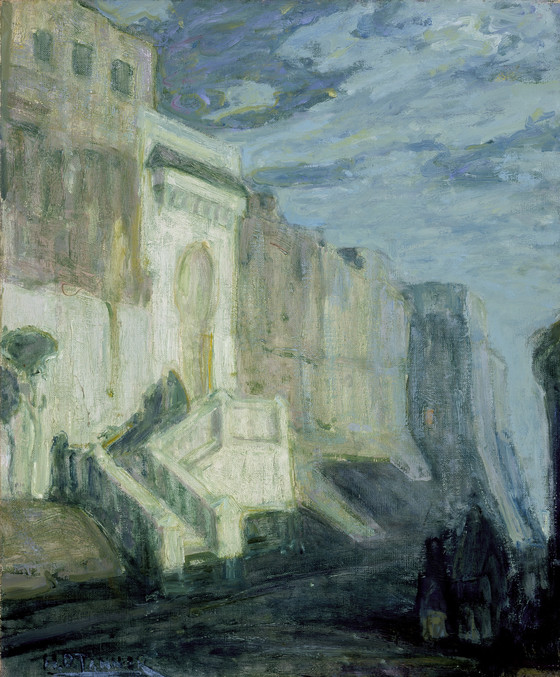Following his 1910 trip to Morocco, Tanner painted many scenes of Tangiers and exhibited them in Chicago at Thurber Art Galleries in 1911 and in New York at M. Knoedler & Co. in 1913....
Following his 1910 trip to Morocco, Tanner painted many scenes of Tangiers and exhibited them in Chicago at Thurber Art Galleries in 1911 and in New York at M. Knoedler & Co. in 1913. Although Moonlight: Walls of Tangiers has traditionally been dated 1914, based on William Preston Harrison’s authority, the painting may have been executed earlier, for several of the works exhibited in 1913 have similar titles, in particular one painting entitled Moonrise: Walls of Tangiers. Although the North African locale provided the same exotic scenery incorporated in Tanner’s religious images, the Moroccan scenes are not religious.
The elimination of a narrative may have assisted Tanner in his exploration of the formal aspects of painting, for it is just during these prewar years that his art underwent its last stylistic change. Tanner used his views of the streets, walls, and arcades of the city to explore the phenomena of color and light, not in an analytical manner as did the impressionists, but rather in harmony with both his own romanticism and turn-of-the-century tonalist trends in Europe and the United States. The Moroccan paintings are all vague, shadowy scenes painted in one predominant hue with thick, scumbled passages over rich glazing on a white ground. The blue and green palette of Moonlight: Walls of Tangiers has shades of yellow, peach, and purple. Tanner had begun to experiment with pigments and glazes around 1907 and by World War I was almost exclusively using the complex technique of layered glazes. Perhaps it was his renewed acquaintance with the Orient that enabled Tanner to develop the more resonant and colorful painting style characteristic of his art from about 1910 until his death in 1937.
More...



